My Rating: 10/10
Should I watch it? Yes, you’ll be missing out otherwise.
I’d like to preface this first post (and review!) with a disclaimer. The site’s appearance will hopefully change in the next few weeks (knowing me, it’ll be months). I wanted to avoid putting off starting this blog by reason of “it doesn’t look sexy enough…”, so here we are.
The choice to turn this into a movie blog was made about a year and a half ago, but I never did anything about it. I’m not sure why, it was probably laziness. It was during a fervent rant about how wonderful “Mindhunters” was to my coworker that I noticed a look of confused wonder that I talked for so long and so passionately. I immediately launched in the typical “Sorry, sorry, I got carried away…” response, and decided I should dump my musings in a place where people can go if they actually want to hear them. My opinion = purely optional to you. That’s how it should be. But alas, Twitter exists, we have phones, and information isn’t really all that optional-so I might as well take advantage.
It goes without sayings, spoilers ahead, so if you haven’t watched The Devil’s Backbone, you can stop reading. Or continue, whatever. You do you.
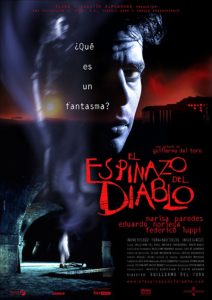
I’ll start this review with the fact that I love Guillermo Del Toro, and most of the films he’s shot during his career. His imaginative storytelling style is so reminiscent of the way I felt when I was a child, unrestrained by the self-criticisms and limitations so often infringed upon us as we grow up. The fact that he’s maintained such a strong delivery of his thoughts was why I fell in love with his original, fantastical, and organic storytelling.
This was not the first Del Toro film that I watched. I had the pleasure of watching it for the first time in a theater recently, something we’re not normally granted when trying to watch movies that were released 17 years ago.
I’m a huge scaredy cat, by the way. Things scare me easily, so I was hesitant to give this one a chance, but my love for Guillermo was what really drove me to sit in the theater. I’ll bone up someday, don’t worry. I’ve even wanted to make a horror movie, but this film is not one I’d consider to be terrifying, even though it’s classified as horror on IMDB.
I was rewarded for my risk, and what ensued was one of the most human stories I’ve ever watched, though it contains so many fantastical elements.
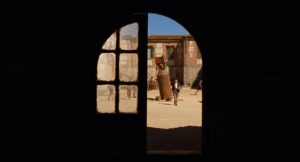
Intro
There are so many things in this film I want to discuss, but I’ve chosen to talk mainly about the characters. The Devil’s Backbone is an extremely well-written story. It’s exceptionally well-made, authentic, and at times, grisly. The visual effects of Santi the ghost are more haunting than sinister, and thankfully, the filmmakers discarded the typical “jump-scare” so often used in ghost stories.
The first thing I noticed in the first 30 minutes was the depth of all the main characters. Carlos, the young protagonist, Carmen, the one-legged and long-suffering headmistress of the orphanage, Dr. Casares, another caretaker that emulates severity but warmth, and of course Jaime, the oldest of the boys, who is also a bully. I was instantly curious to learn more about these characters and their sufferings, and this was particularly punctuated when Carlos is abandoned at the orphanage by his caretaker, Mr. Ayala.
The Humanity of Carmen
I empathized with Carlos right away, since we learn that his father has died but no one has bothered to tell him. But the most surprising moment of empathy came when I first saw Carmen. I’ve always thought of the plight of women during wartime, sitting at home waiting and “holding the fort” while men go forward to fight and die for lofty ideals. That heroic notion is a good one, but impractical. Someone has to stay home, and the expectation has long been forced onto women. What if they wanted to go to battle and fight for their ideals? Who would look after the kids? That’s a different topic for a different time.
Anyway, Carmen represents the many women that maintain a shrewd mind, thinking of house, home, children, and future, enabling the men to go off and be heroes. Carmen’s is a character that goes largely underrepresented, due to the shallow nature of many female characters in film/TV. She has survived so much, balancing the care of the children in her charge and the responsibility of protecting the assets of the revolutionaries.
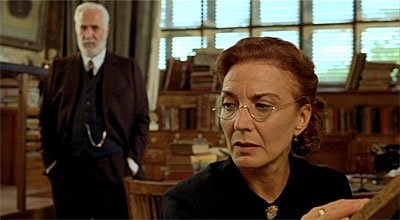
But what solidified my belief in her authenticity was her ongoing affair with groundskeeper and former orphan Jacinto. She initially comes across as venerated and honorable, yet still has human needs and desires. In this case, lust is her flaw, thus leading to a kind of infidelity against her emotional beau Dr. Casares. It is an achievement to maintain the likability of a character while displaying their flaws and mistakes for all to see.
Her subdued yet teasing romance with Dr. Casares is charming, yet they never seal the deal-which we learn while the latter is talking with Carlos about the babies with spina bifida (or, “The Devil’s Backbone”). It also renewed my appreciation for a love story between two adults who never actually consummate their love, via marriage or sex. Despite Carmen’s infidelity, their love for each other was pure, and it is apparent to me (and probably you) that love is never without pain. If anything, the tested love is the strongest. As Carmen lay dying, instead of exchanging the normal “I love you’s”, Dr. Casares says good-bye in their language of love: poetry. On paper, this seems cliche, but in the context of their tragic circumstances, the failed fruition of their lives together, and the death and destruction around them, it’s significantly romantic and devastating. Their relationship cannot be labeled as good or bad, healthy or unhealthy. I would categorize it as a manifestation of the good and bad of every relationship; the question is only about whether a love between two people can survive such hardship, self-inflicted or otherwise.
Carlos and Jaime
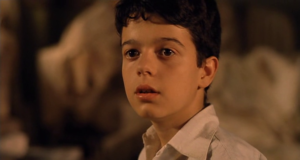
Carlos’ bravery and strength during this film is something I could never feel capable of doing myself. I found myself getting frustrated with how much he would cover for Jaime’s cruelty, or find himself in situations where he would get in trouble while the true perpetrator would get away. I disliked Jaime so much at the beginning, and even suspected he had something to do with Santi’s death, which is probably implied in the first scene of the film as he stands over Santi’s bloodied body and weeps.
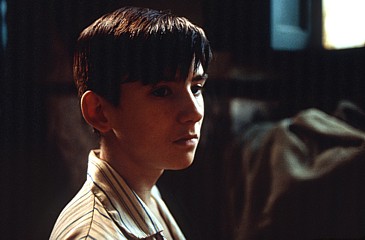
My first impression was supremely wrong. Jaime quickly became my favorite character. Soon, it became apparent that Jaime’s hostility came from a dark place of helplessness and despair. Once he reveals his secret about the true circumstances of Santi’s death at the hands of Jacinto, his character changes in a way that is touching to watch. He steps into his place as a natural born leader, and rallies the boys together against Jacinto and his thugs. His alliance with Carlos, hard-won and truly tested, becomes a diamond that weathers the storm of the violent nature sometimes borne by adults. They warm to the care that Dr. Casares has shown them, and solidify themselves as true survivors, denying any self-pity or victimization. They defeat Jacinto, satisfy the restless phantasm (Santi), and manage to leave. It’s not quite a happy ending, but it’s a damn good one. It mirrors life in that not everything will work out the way you want, but if you just keep moving forward, things can (and will) unfold in a way you never imagined.
The Villain
I’ve thought about Jacinto’s qualification as a villain frequently, and I think the pivoting moment of his character arc is the death of Santi. He has killed Santi by accident; his choice to cover it up is where his choices start becoming bad decisions. He is the “antagonist”, but as we’ve seen in society, people with a flare for cruelty or selfishness almost always have a sorrowful past. I feel uncomfortable that I even feel a little bit sorry for Jacinto, but this is what makes storytelling riveting so I shouldn’t complain.
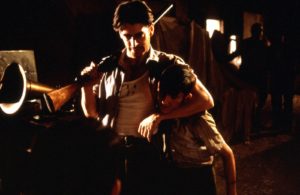
When Santi is pushed by Jacinto into the wall, he falls, bleeding profusely. I don’t think he was dead at the time, but I believe Jacinto was too focused on the success of his plan to salvage the mercy in his heart and try to save the boy, worried about implicating himself. Jacinto is not, as some would say, “The Twirling Mustache” or purely evil villain. His story is sad, enhanced by his desires to leave the orphanage and rise above the level of poverty he has endured for his whole life-he has his reasons. However, even he shows vulnerability when he finds old photos of himself annotated meticulously by Carmen. He almost seems to regret his behavior, but has gone so far down the path he’s chosen, he won’t survive the intensity of his remorse. So, the moment of reflection passes, and instead he uses that moment as a justification for his actions.
Story & Conclusion
The story is executed with smoothly intertwined character arcs that all come to a head. It’s the humanity of the characters that supports the authenticity of that time period. Not at a single point did I question the choices the writers had made for their characters, because I truly believed that those characters were making their own choices. I think this is a really important, since the audience has to care for a story to be good. The cast rose up spectacularly to meet the demands of their roles, delivered a unity between performance and written word that is supremely fun to watch. I tell how “good” a film is by how I feel afterward – and after this film was over, the only feeling that came to mind was satisfaction.
Success? ABSOLUTELY.
Cry Count: 2
- When Carlos is running after Mr. Ayala’s departing car. (a couple of tears)
- When Carmen’s dies in Dr. Casares’ arms as he recites poetry to her. (copious weeping)